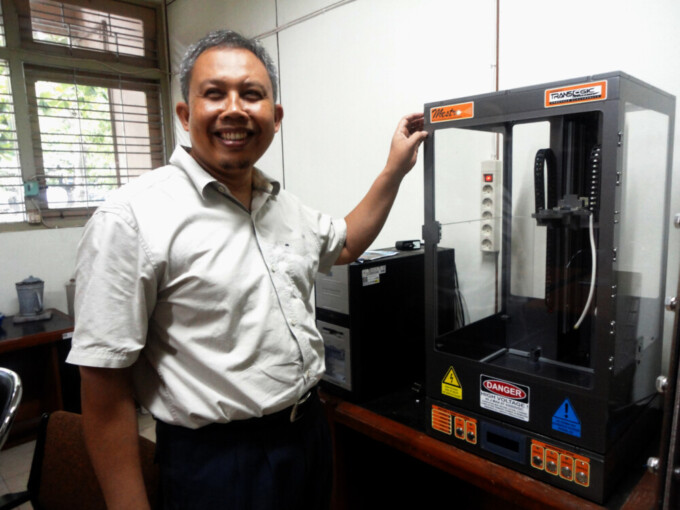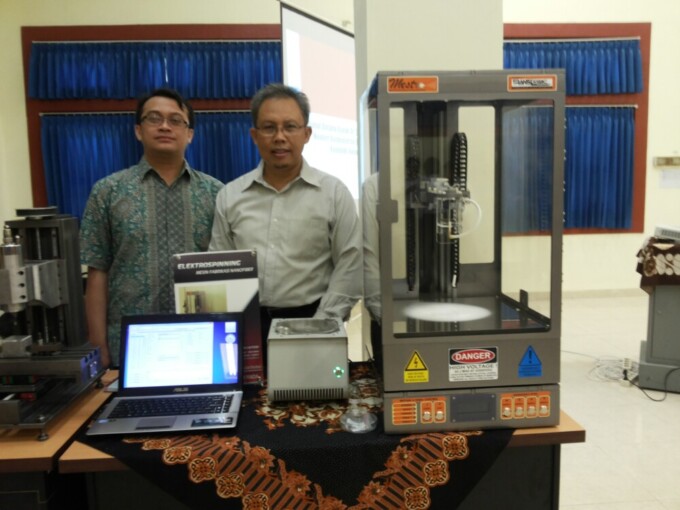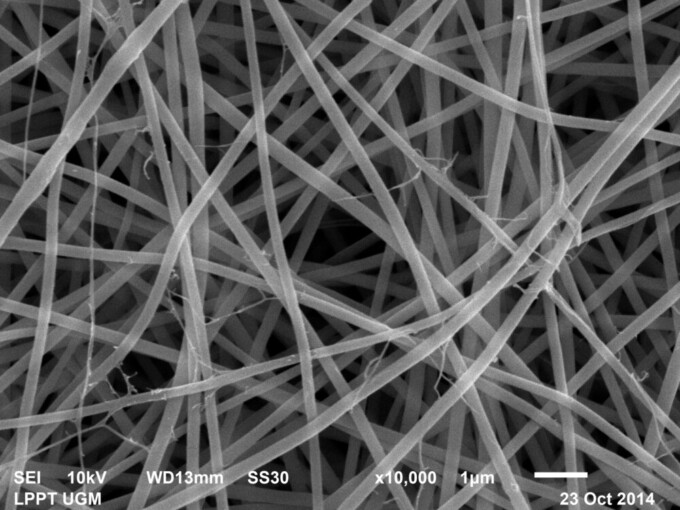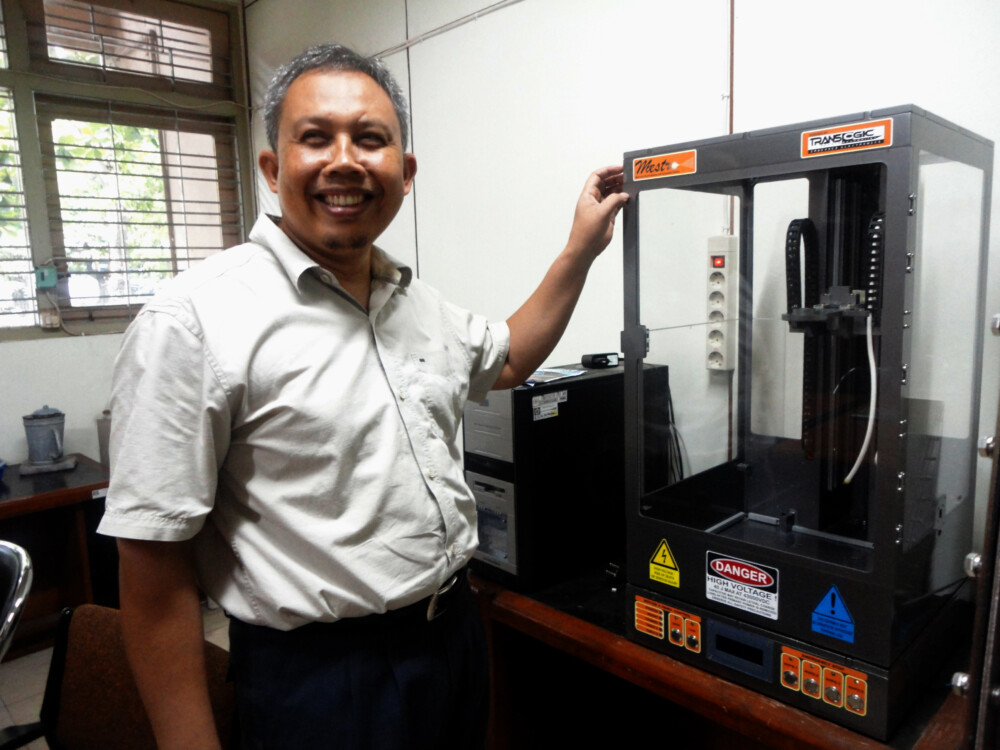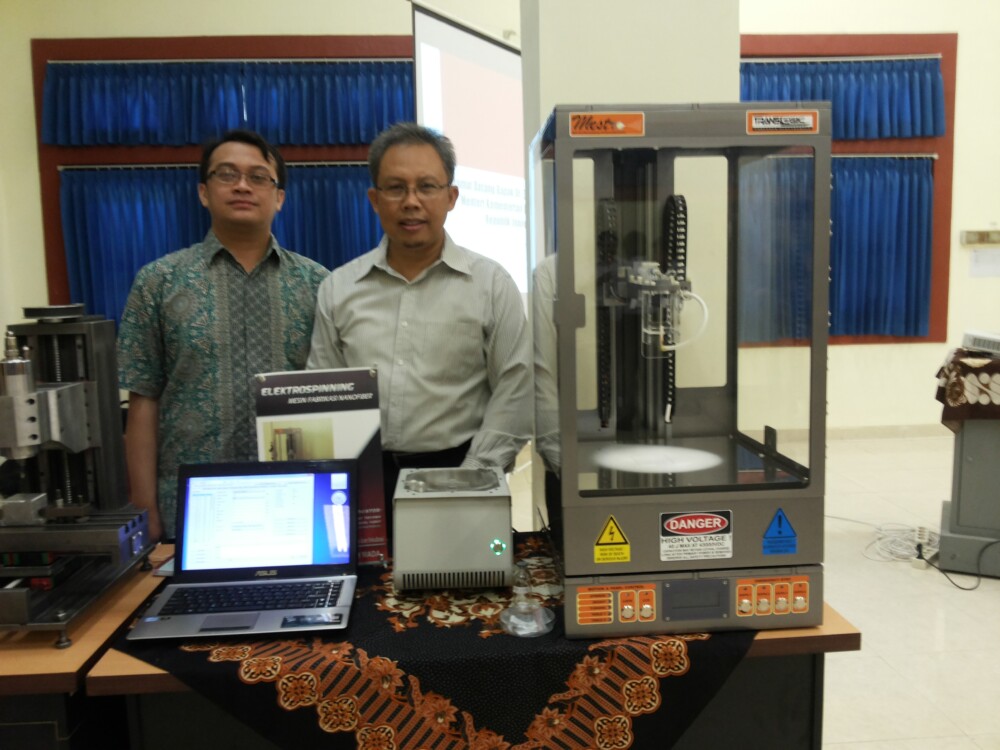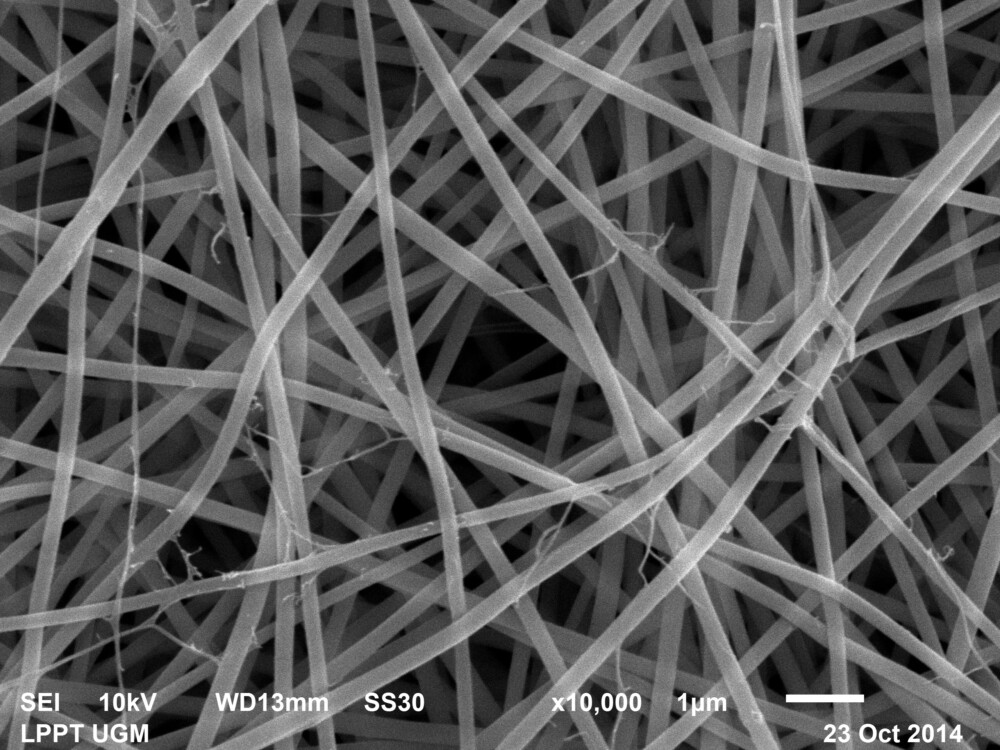YOGYAKARTA – Researchers from Universitas Gadjah Mada (UGM) conducted a research in nanotechnology engineering. The technology to manipulate functional material into nanofibers (fiber in nanometer size) is conducted by lecturer in Physics, Dr. Kuwat Triyana dan Dr. Yusril Yusuf, along with other researchers joining the UGM Nanomaterial Research group that affiliates with UGM Testing Laboratory (LPPT). The team makes the electrospinning machine.
According to Kuwat, the electrospinning machine can make nanofibers for many purposes. The material is obtained from natural resources that are abundant in Indonesia, including fishery waste such as shrimp and crab bones that can be converted into chitosan and later made into nanofiber chitosan. Even animal skin and bone that are usually made into leather and accessories can be transformed into gelatine that is then processed into nanofiber gelatine.
Funded by UGM and Higher Learning Directorate General, the team has developed the third and fourth generation of electrospinning. The third generation operates on 45 kV dc, so able to produce coaxial nanofiber. Meanwhile, the fourth generation electrospinning generasi operates on 100 kV dc, no longer using syringe, hence it is called needle-free electrospinning, “This machine can make nanofiber layers in industry scale,” said Kuwat in Faculty of Mathematics and Natural Sciences UGM, Monday (22/12).
Waste Processor
The Nanomaterial Research group is also developing nanofibers for waste processing to save Indonesia’s environment. Kuwat invites anyone interested in nanofiber technology to join and utilise the electrospinning that is very useful. “So far, there 30 researchers already joining,” he said.


